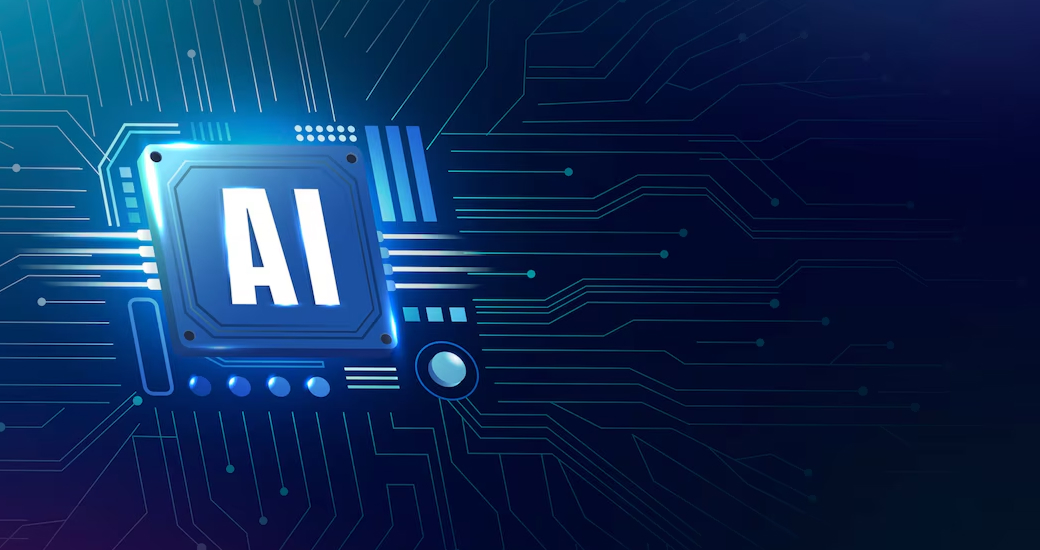Artificial intelligence (AI) has advanced significantly, moving from simple question-answer systems to agents that can perform tasks as efficiently as humans.
These AI agents are now applied in healthcare, finance, and e-commerce, improving drug discovery, fraud detection, and supply chain optimization.
A survey by Capgemini found that 10% of companies are already using AI agents, and 82% plan to implement them in the next few years.
Building an AI agent is worth considering if your business wants to stay relevant and improve customer engagement. But how do you start?
In this blog, we will take you through what an AI agent is, the process of building one, and how to build AI agents from scratch.
What is an AI Agent?
An AI agent is a smart software program that can perform tasks independently using algorithms. It can understand information, make decisions, and take action based on what it learns or the data it gets.
You’ll find AI agents in chatbots, virtual assistants, recommendation systems, and customer support tools. They work by analyzing text, images, or voice and responding in human-like ways.
For example, an AI agent might answer questions, suggest products, or help solve problems. Thanks to machine learning, the more it is used, the better it gets at its tasks.
The Basics of Building and Training AI Agents
Before you start creating your own AI agent, you should understand the fundamental components involved in building one:
- Defining the Purpose: The first step is deciding your AI agent's role. Will it be a chatbot that handles customer service queries or a voice assistant that helps manage tasks? Defining the purpose will guide the entire development process.
- Collecting Data: AI agents rely on data to learn and improve. For instance, a chatbot needs conversational data to understand language patterns, while a recommendation engine needs user behavior data to suggest products. High-quality, relevant data is essential for training a successful AI agent.
- Choosing an Algorithm: The core of an AI agent is the algorithm used to process data and make decisions. Popular algorithms include machine learning models, decision trees, and natural language processing (NLP) algorithms.
- Training the Model: The AI agent needs to be trained with data to learn to understand input and make decisions. This step involves feeding data into a machine-learning model and tweaking it to improve accuracy.
- Testing and Evaluation: After training the model, you must test it to ensure it performs as expected. You will evaluate it based on its accuracy, ability to handle different data types, and ability to meet its intended goals.
- Deployment: Once the AI agent is trained and tested, it’s time to deploy it. You can integrate it into a website, mobile app, or software platform, depending on your needs. After deployment, continuous monitoring and updating are required to ensure the AI agent remains effective.
6 Easy Steps for Building and Training AI Agents
Building and training an AI agent doesn’t have to be complicated. Here are six essential steps.
Step 1: Choose the Right AI Platform or Tool
The first step in how to make AI agents is selecting the right platform or tool. The one you choose will depend on how skilled you are and how complex the AI agent is that you are trying to create. Some popular AI agents companies and AI platform creator:
- AI Platform Creators: Google Cloud AI, Microsoft Azure, and IBM Watson offer tools that simplify development. These platforms have pre-built models, APIs, and easy-to-use interfaces that are great for beginners.
- Custom Development: If you are more experienced, tools like TensorFlow, PyTorch, and Keras allow you to build AI agents from the ground up. These platforms require coding skills but provide more control over the agent’s behavior.
Step 2: Define Your AI Agent’s Purpose and Scope
The next step is to define what your AI agent will do. Think about its purpose and how it will interact with users. For example:
- Chatbots: These AI agents handle customer service inquiries or provide information.
- Virtual Assistants: These can help with scheduling, reminders, or answering questions.
- Recommendation Systems: These suggest products or content based on user behavior.
Step 3: Collect and Prepare Data
AI agents rely on data to learn. Depending on the agent's task, this data could be text, images, audio, or other types. For example:
- A chatbot needs a large dataset of conversations to understand how humans communicate.
- A recommendation engine needs user behavior data to make accurate suggestions.
- To train the model effectively, collect relevant and diverse data. The better the quality of your data, the better your AI agent will perform.
Step 4: Train the Model
Training your AI agent involves feeding it data and allowing it to learn. You’ll use machine learning algorithms to build models that understand and respond to input.
Here’s how to train your agent:
- Preprocessing: Before feeding the data into the model, clean it up by removing unnecessary information and converting it into a usable format.
- Feed the Data: Use the collected data to train your agent. The agent will learn to recognize patterns in the data and use them to make decisions.
- Testing: During training, evaluate the model’s performance and adjust it to improve accuracy.
Step 5: Test and Evaluate the AI Agent
After training your AI agent, you need to test its performance. Run simulations or use real-world data to see how well the agent handles various scenarios.
Key performance metrics to consider include:
- Accuracy: How well the AI agent performs its task.
- Precision and Recall: How well the agent identifies relevant information and avoids errors.
- F1 Score: This combines precision and recall to give an overall measure of how well the agent is doing.
If the agent doesn’t perform well, optimize the model by adjusting the training process, adding more data, or choosing different algorithms.
Step 6: Deploy and Monitor
Once the AI agent is trained and performs well, deploy it into your production environment. Depending on the agent’s purpose, deployment might involve embedding it into a website, app, or AI chat apps service.
After deployment, monitor the agent’s performance regularly to identify issues and improve accuracy. Collect feedback from users to inform ongoing improvements and ensure the agent’s functionality continues to improve.
Conclusion
Building an effective AI agent requires a good understanding of AI agent tools and how to apply them. However, since AI constantly changes, finding trustworthy resources and learning from them can be difficult and time-consuming.
If you want to create AI agents for your business, partner with experts at Saffron Tech. Our experienced team can help you develop custom AI agent development solutions that improve customer experiences and operational efficiency. Contact us today to get started on building your AI agent.
FAQs
To build an AI agent from scratch:
- Define Purpose: Decide what the AI agent is supposed to do (e.g., automate tasks and answer queries).
- Data Collection: Gather relevant data, such as conversation logs for chatbots or user activity data for recommendation systems.
- Choose Algorithm: Select a machine learning algorithm that suits your task. Common ones include decision trees, neural networks, and reinforcement learning.
- Train Model: Use the data to train your model. The model will learn patterns and make predictions based on this data.
- Test and Optimize: Evaluate the model’s performance. Adjust parameters, improve data quality, or try different algorithms if necessary.
- Deploy and Monitor: Once the model performs well, deploy it. Monitor its performance and update it as needed based on new data.
Best practices for building AI agents include:
- Set Clear Goals: Define what you want the AI agent to achieve (e.g., efficiency, customer satisfaction).
- Focus on Data Quality: High-quality, clean, and relevant data is crucial for training effective models.
- Choose the Right Algorithm: Pick algorithms well-suited for your task, whether natural language processing or machine learning.
- Address Bias: AI can learn biases from the data. Regularly check and correct any biases that might affect performance.
- Test and Iterate: Continuously test your AI agent, collect feedback, and optimize it to improve results.
Common programming languages for AI development include:
- Python: Most popular for AI development due to its libraries like TensorFlow, PyTorch, and Scikit-learn.
- R: Good for statistical analysis and visualization, especially for data-heavy AI tasks.
- JavaScript: Useful for web-based AI applications with libraries like TensorFlow.js.
- Java: Often used in large-scale AI systems, especially in enterprise applications.
- C++: Occasionally used in performance-critical applications like gaming or robotics.
Challenges in AI agent development include:
- Data Issues: Poor or insufficient data can hurt performance. To solve this, focus on collecting and cleaning high-quality data.
- Overfitting or Underfitting: This happens when the model is too specific to training data (overfitting) or not learning enough (underfitting). Use techniques like cross-validation to improve results.
- Complex Decision-Making: Some tasks require complex reasoning. Use algorithms like reinforcement learning to handle these situations.
- Bias: AI models can inherit biases from training data. Regular audits and fairness checks can help mitigate this issue.
- Lack of Interpretability: Complex models can be hard to understand. Consider explainable AI (XAI) techniques to make your model’s decision-making more transparent.
Here are some great resources to get started with AI agent development:
- Online Learning Platforms: Websites offering courses in AI, machine learning, and AI agents. They usually have beginner-friendly tutorials and in-depth content for advanced learners.
- Community Forums: Platforms where AI developers share knowledge, ask questions, and discuss challenges in AI development.
- Online Documentation: Platforms like Google AI or similar ones provide tutorials, API documentation, and code examples.
- GitHub: Explore open-source AI projects to understand how others build AI agents.
- Tutorial Blogs and Articles: Many AI development experts and companies share detailed blogs that cover various aspects of building AI agents.



